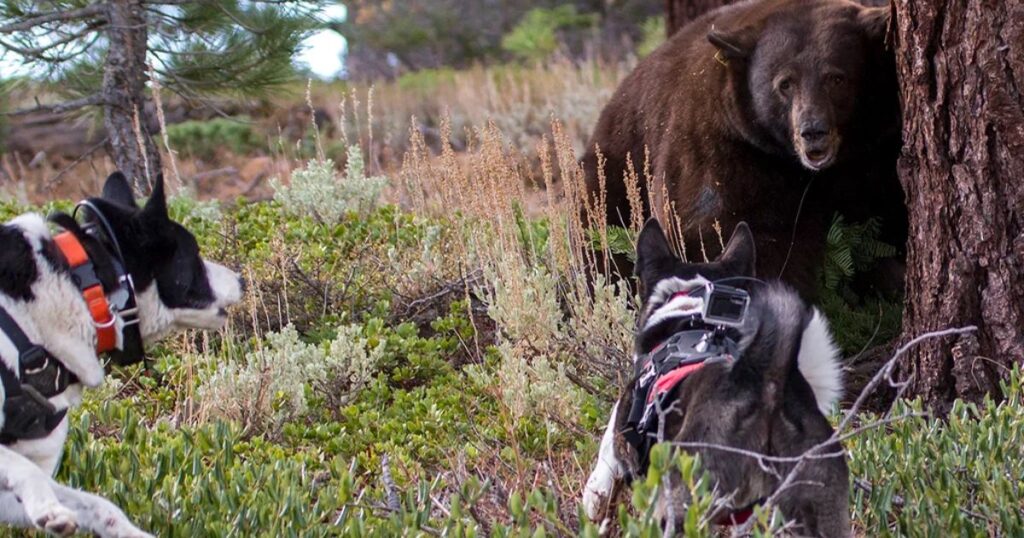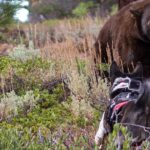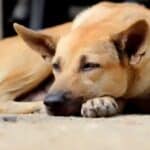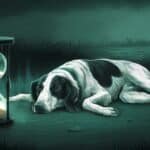Imagine this: You’re deep in the wilderness, the crisp mountain air filling your lungs, when suddenly you hear a low growl that makes your hair stand on end. There’s a 600-pound grizzly headed your way, and in that heart-stopping moment, you’re grateful for the four-legged companion by your side. Welcome to the world of bear hunting with dogs, where canine hunters and human adventurers team up to take on nature’s most formidable predators.
For centuries, hunters have relied on the keen senses and unwavering courage of specially bred dogs to track, chase, and sometimes even confront bears. These ursine trackers aren’t your average backyard pooches – they’re the result of generations of selective breeding for strength, stamina, and sheer grit. In this comprehensive guide, we’ll explore the top 8 bear hunting dog breeds, delving into their unique characteristics, hunting styles, and what makes them the ultimate wilderness-tracking dogs.
What Makes a Great Bear Hunting Dog?
Before we dive into our lineup of furry bear chasers, let’s break down what qualities make a dog suited for this dangerous and exhilarating pursuit:
- Courage: A bear hunting dog must possess nerves of steel. They need to stand their ground when faced with a creature several times their size.
- Physical Attributes: Size matters, but it’s not everything. These dogs need a robust build, weather-resistant coat, and endurance to cover miles of rugged terrain.
- Sensory Abilities: A keen nose is crucial. The best scent-following dogs can track a bear’s trail even days after it’s passed through an area.
- Trainability: In the heat of the chase, your dog must respond to commands without hesitation. Obedience can be a matter of life and death in bear country.
- Hunting Instincts: Whether it’s treeing a bear or holding it at bay, these dogs need strong prey pursuit instincts.
Now, let’s meet our top 8 contenders in the world of bear-hunting breeds:
1. Plott: The Southern Gentleman of Bear Dogs
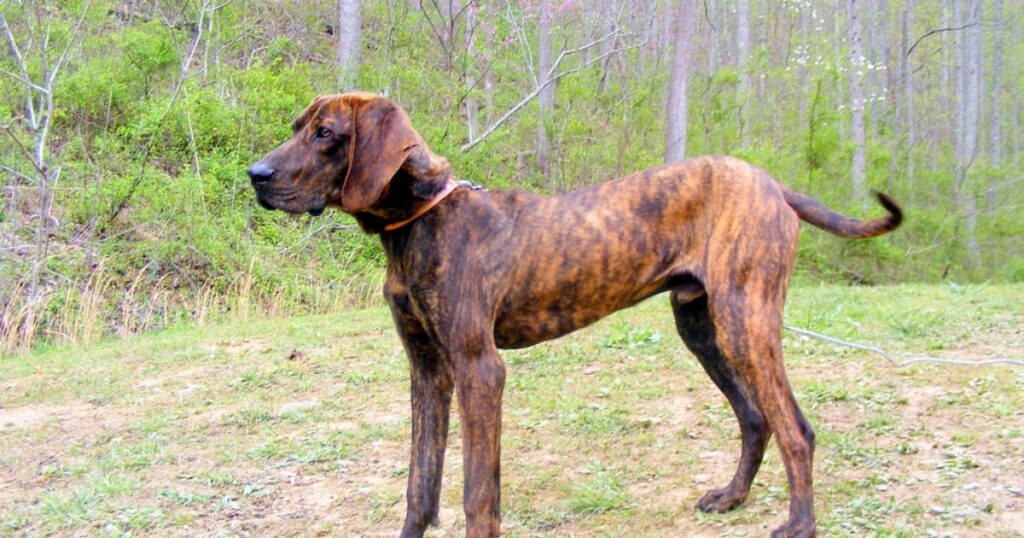
The Plott hound, often simply called the Plott, is the unofficial king of bear hunting dogs. Originating in the Appalachian Mountains, this breed was developed by German immigrant Johannes Plott and his descendants.
Key Characteristics:
- Weight: 40-60 lbs
- Height: 20-25 inches
- Coat: Short, smooth, and often brindle-colored
- Lifespan: 12-14 years
Plotts are renowned for their tenacity and grit. These scent hounds will track a bear tirelessly, using their distinctive “chop” bark to signal to hunters when they’ve tried their quarry. Their agility allows them to navigate the toughest mountain terrain with ease.
“A good Plott won’t quit until the job’s done or you call ’em off. They’ve got more grit in their little toe than most dogs have in their whole body.” –
Earl Phillips, veteran bear hunter
As family pets, Plots are loyal and affectionate, but their high energy and strong prey drive mean they’re not for the faint of heart. They need plenty of exercise and mental stimulation to thrive.
MORE READ: 12 Doberman Pinscher Pros & Cons You Should Know About in 2024
2. Alaskan Malamute: The Arctic Warrior
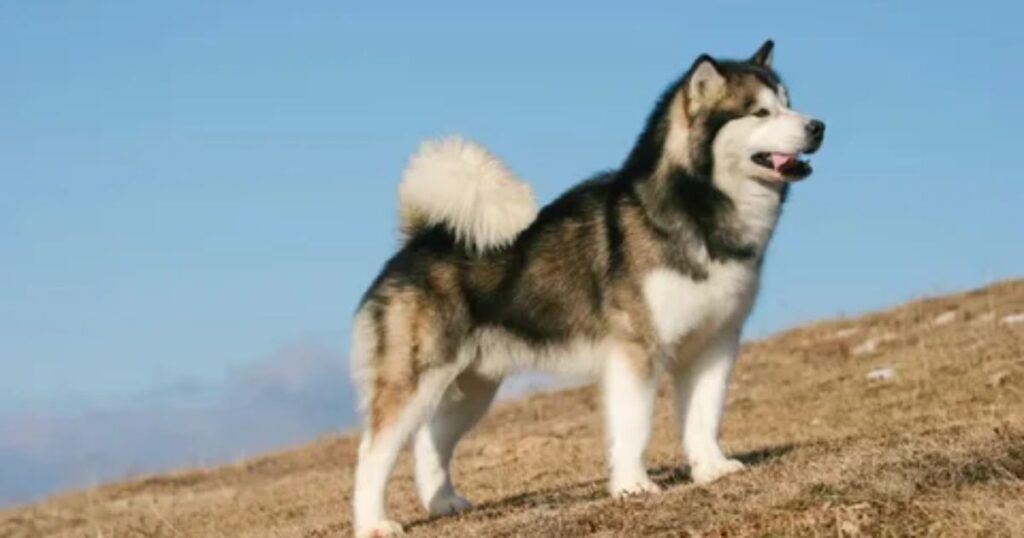
When it comes to hunting in frigid conditions, few breeds can match the Alaskan Malamute. These northern sled dogs were originally bred by the Inuit people for hauling heavy loads across vast Arctic expanses.
Key Characteristics:
- Weight: 75-85 lbs
- Height: 23-25 inches
- Coat: Thick double coat, typically gray and white
- Lifespan: 10-14 years
While not traditionally used for bear hunting, malamutes have the size, strength, and cold-weather adaptations that make them formidable wilderness chase partners. Their thick fur protects them from both cold and bear claws, while their powerful build allows them to hold their own in a confrontation.
Malamutes excel in tracking and hauling out game in snowy conditions. However, their independent nature can make them challenging to train them for specialised hunting tasks.
Owning a Malamute: Things to Consider
- Enormous exercise needs
- Strong pack mentality – they may try to dominate other pets
- Heavy shedding, especially during seasonal “blows”
- Not suited for hot climates
3. Caucasian Shepherd: The Mountain Mammoth
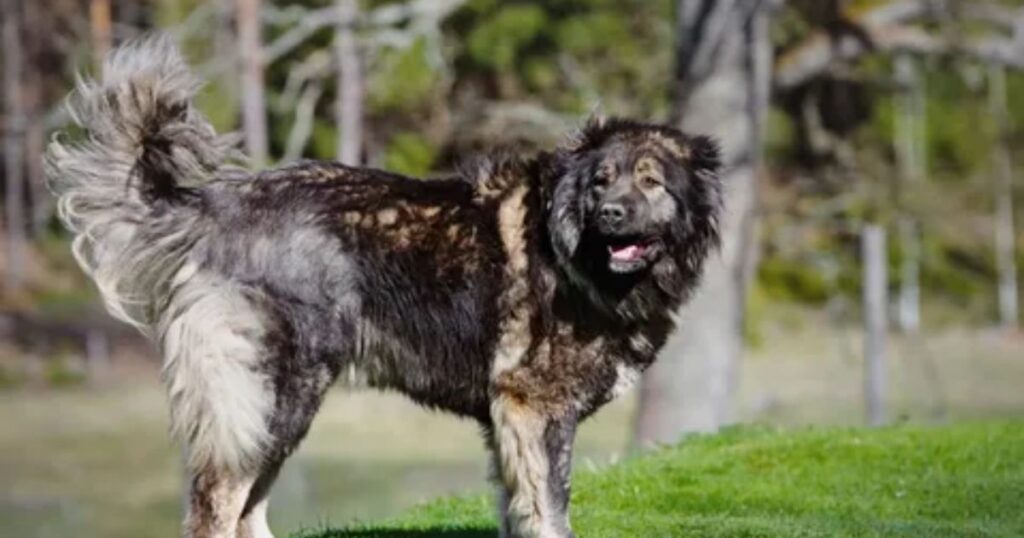
Hailing from the rugged Caucasus region, the Caucasian Shepherd, or Caucasian Ovcharka, is a true giant among hunting companions.
Key Characteristics:
- Weight: 100-170 lbs
- Height: 23-30 inches
- Coat: Long, thick, and often with a mane-like”blows,
- Lifespan: 10-12 years
These massive dogs were originally bred to protect livestock from bears and wolves, making them natural choices for bear hunting. Their sheer size and protective instincts make them formidable opponents for any bear.
In a hunting scenario, Caucasian Shepherds often work as Russian bear dogs, using their imposing presence to intimidate and hold bears at bay until hunters arrive. Their thick coats provide excellent protection against both cold and bear attacks.
Challenges of Owning a Caucasian Shepherd:
- Requires extensive socialisation from puppyhood
- Can be aggressive towards strangers and other animals
- Needs a large, secure outdoor space
- Not recommended for first-time dog owners
4. Tibetan Mastiff The Ancient Guardian Turned Hunter
The Tibetan Mastiff, known as Do-khyi in its homeland, is an ancient breed with a rich history as a guardian and, now, a capable bear hunting dog.
Key Characteristics:
- Weight: 70-150 lbs
- Height: 24-26 inches
- Coat: Heavy, woolly coat with a mane-like ruff
- Lifespan: 10-12 years
These Himalayan guardians were traditionally used to protect monasteries and nomadic camps from predators, including bears. Their massive size and fearless nature make them natural deterrents in bear country.
While not as fleet-footed as some other hunting breeds, Tibetan Mastiffs excel in holding their ground and intimidating bears. Their thick coats provide excellent protection in harsh mountain environments.
Tibetan Mastiff Temperament:
- Fiercely loyal to their family
- Aloof and wary of strangers
- Independent thinkers can be challenging to train
- Nocturnal tendencies – they may bark at night
5. Chongqing Dog: China’s Hidden Hunting Gem
The Chongqing Dog, also known as the Chinese hunting dog, is a rare breed that’s relatively unknown outside its native China.
Key Characteristics:
- Weight: 40-70 lbs
- Height: 16-20 inches
- Coat: Short, smooth, and often blue-black in colour
- Lifespan: 9-11 years
These compact but muscular dogs were bred for hunting in the mountainous regions of Sichuan. Their short coat and wrinkled skin are adaptations for moving through dense underbrush.
Chongqing dogs are known for their exceptional scenting ability and fearless nature when confronting large game. They’re often used in teams to track and tree bears.
Why Chongqing Dogs are Rare:
- Limited breeding outside of China
- Strict export regulations
- Lack of recognition by major kennel clubs
- Specialised hunting abilities that don’t translate well to pet life
6. Karelian Bear Dog: Finland’s Fearless Forest Fighter
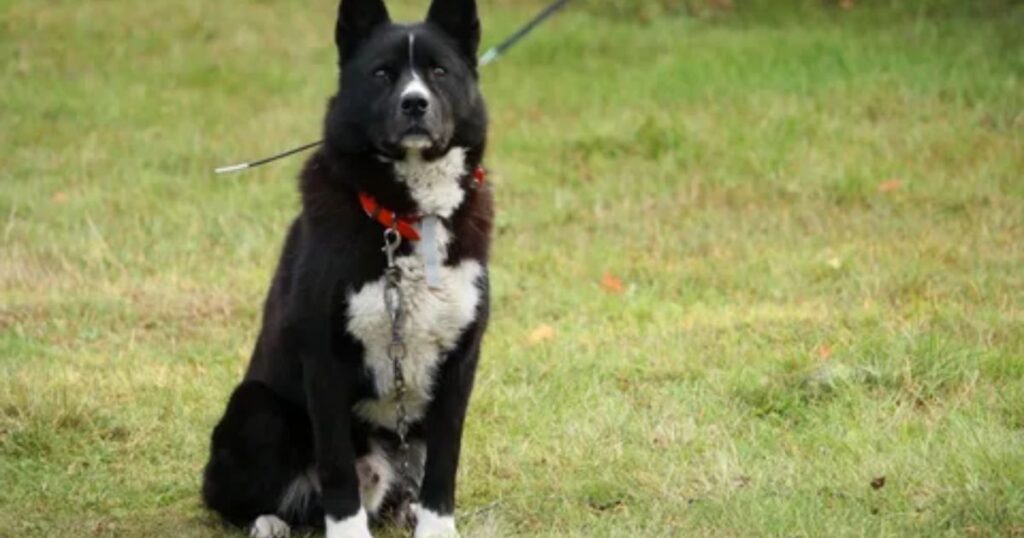
The Karelian Bear Dog, or Karjalankarhukoira in Finnish, is a specialised Nordic hunting dog bred specifically for hunting large game, including bears.
Key Characteristics:
- Weight: 44-49 lbs
- Height: 19-24 inches
- Coat: Short, dense black and white coat
- Lifespan: 11-13 years
These taiga dogs are known for their incredible bravery and ability to hold bears at bay without direct confrontation. They use their loud, distinctive bark to corner and distract the bear until hunters arrive.
Karelian Bear Dogs are increasingly used in wildlife management for bear aversion training, helping to reduce human-bear conflicts in populated areas.
Training a Karelian Bear Dog:
- Start socialisation early to prevent aggression
- Use positive reinforcement techniques
- Provide plenty of mental and physical stimulation
- Be prepared for a strong-willed, independent thinker
7. English Coonhound
The English Coonhound, also known as the American English Coonhound or Redtick Coonhound, is a versatile scent hound that’s found success in bear hunting.
Key Characteristics:
- Weight: 45-65 lbs
- Height: 21-27 inches
- Coat: Short, hard coat, often with a red tick pattern
- Lifespan: 10-12 years
Originally bred for fox hunting, these southern hounds have adapted well to pursuing larger game. Their exceptional stamina and “cold nose” ability to follow old trails make them valuable assets in bear hunting.
English Coonhounds are known for their musical howl, which they use to communicate with hunters during the chase. They excel at treeing bears, allowing hunters to catch up to the action.
English Coonhound Hunting Style:
- Pick up the scent trail
- Follow the trail with loud, melodious baying
- Chase the bear until it trees or bays
- Hold the bear in place with continual barking
8. Bloodhound
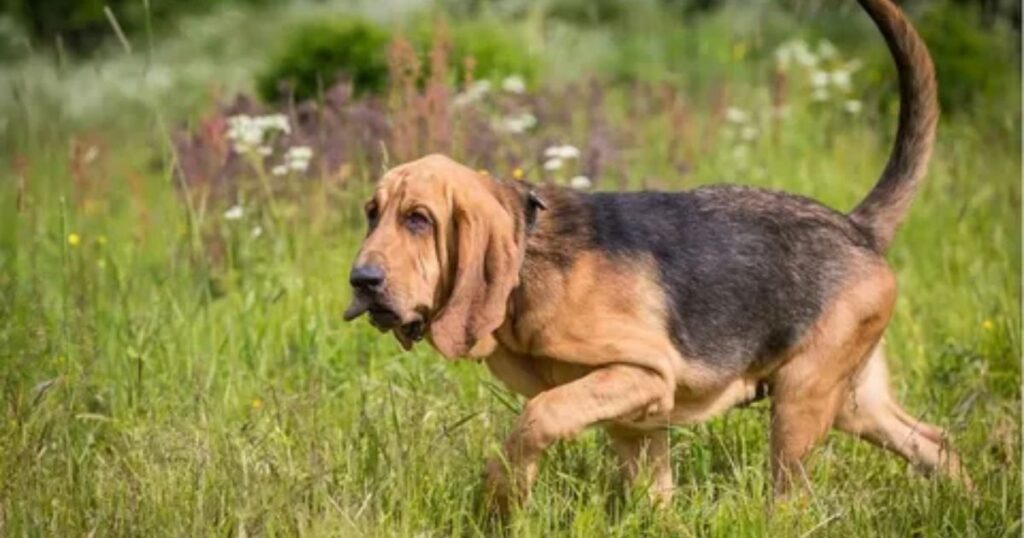
Last but certainly not least, we have the Bloodhound – the undisputed champion of scent tracking.
Key Characteristics:
- Weight: 80-110 lbs
- Height: 23-27 inches
- Coat: Short, dense coat in black, liver, or red
- Lifespan: 10-12 years
While not typically used for the final confrontation with a bear, Bloodhounds play a crucial role in game detection and tracking. Their legendary sense of smell can pick up trails that are days old, makcoonhoundsaluable in locating bear territories and recent activity.
Bloodhound abilities:
- Can discern individual scents even when masked by other strong odours
- I was able to follow a scent trail for over 100 miles
- Their long ears and wrinkled skin help to trap scent particles
Bloodhounds are gentle giants at home, known for their affectionate nature with family. However, their strong tracking instincts mean they should always be kept on a leash in unsecured areas.
Training Your Bear Dog
Turning a puppy into a skilled bear hunting dog requires dedication, patience, and expertise. Here’s a brief overview of the training process:
- Early Socialization: Expose your pup to various sights, sounds, and smells from a young age.
- Basic Obedience: A solid foundation in commands like “come,” “stay,” and “leave it” is crucial.
- Scent Training: Introduce bear scents early and reward interest in tracking.
- Simulated Hunts: Use decoys and recorded bear sounds to prepare your dog for real encounters.
- Physical Conditioning: Build endurance with long hikes and runs.
- Pack Training: If hunting with multiple dogs, teach them to work as a team.
Conclusion: Choosing Your Perfect Furry Hunting Partner
Selecting the right bear hunting dog breed is a deeply personal decision that depends on your hunting style, experience level, and living situation. Whether you opt for the gritty determination of a Plott, the cold-weather prowess of an Alaskan Malamute, or the scenting superpower of a Bloodhound, remember that these game-chasing canines are more than just hunting tools – they’re loyal companions that deserve love, care, and respect.
ALSO READ THIS POST: Top 25 Dog Breeds with the Strongest Bite Force (Ranked by PSI)
Owning a bear-hunting dog is a serious commitment that extends far beyond the hunting season. These breeds require extensive training, socialisation, and exercise to thrive. But for those willing to put in the work, the bond formed with these remarkable animals can be one of life’s most rewarding experiences.
As you consider embarking on the adventure of bear hunting with dogs, remember to prioritise safety, ethical hunting practices, and the well-being of both your canine partner and the wildlife you pursue. Happy hunting, and may your chosen breed be the perfect match for your ursine pursuit adventures!

Davin Connor is an experienced author with 3 years in pets writing. Known for concise, informative content, he shares expertise on pet care, behavior, and health through his engaging articles.
